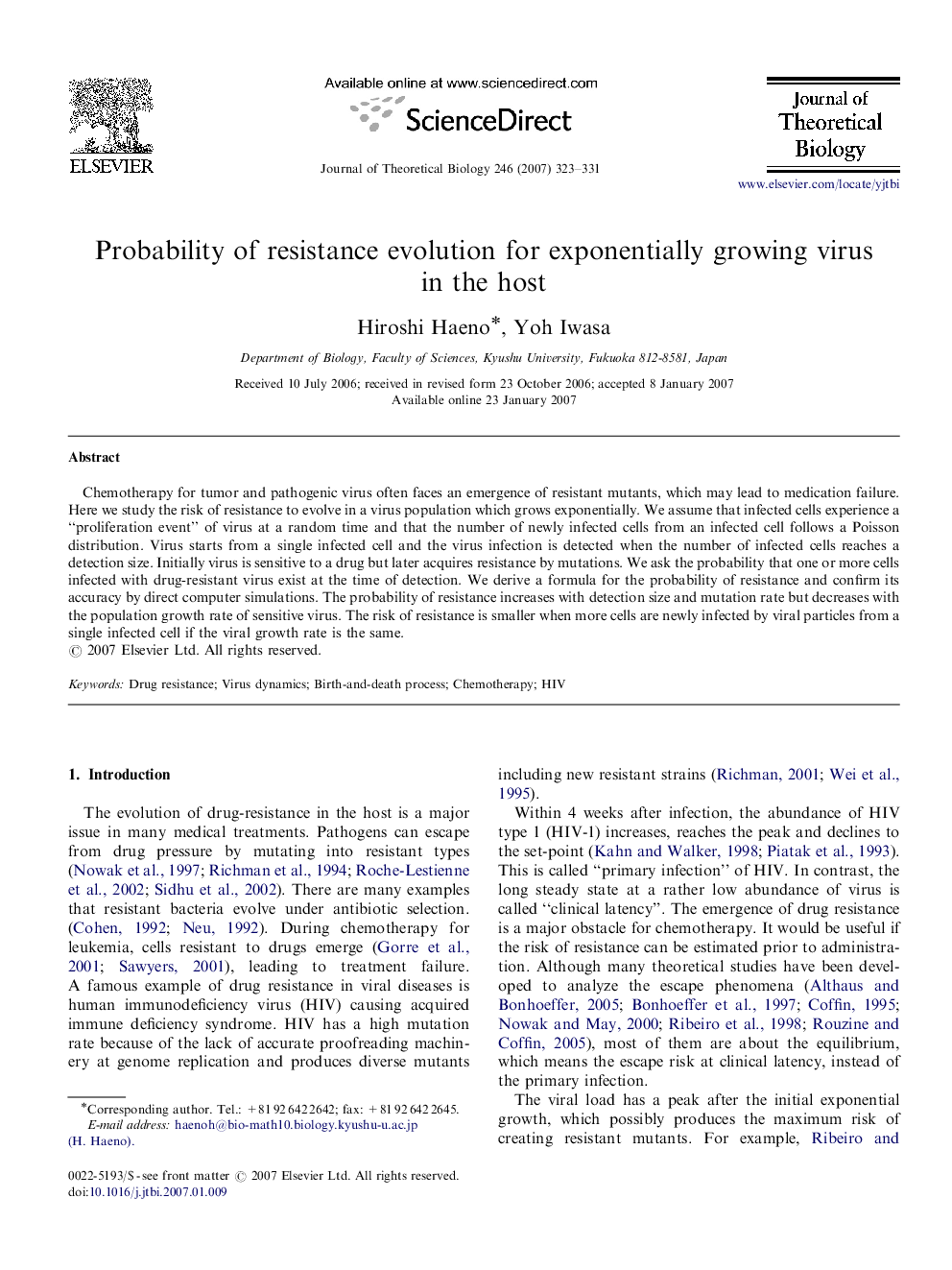| Article ID | Journal | Published Year | Pages | File Type |
|---|---|---|---|---|
| 4499173 | Journal of Theoretical Biology | 2007 | 9 Pages |
Chemotherapy for tumor and pathogenic virus often faces an emergence of resistant mutants, which may lead to medication failure. Here we study the risk of resistance to evolve in a virus population which grows exponentially. We assume that infected cells experience a “proliferation event” of virus at a random time and that the number of newly infected cells from an infected cell follows a Poisson distribution. Virus starts from a single infected cell and the virus infection is detected when the number of infected cells reaches a detection size. Initially virus is sensitive to a drug but later acquires resistance by mutations. We ask the probability that one or more cells infected with drug-resistant virus exist at the time of detection. We derive a formula for the probability of resistance and confirm its accuracy by direct computer simulations. The probability of resistance increases with detection size and mutation rate but decreases with the population growth rate of sensitive virus. The risk of resistance is smaller when more cells are newly infected by viral particles from a single infected cell if the viral growth rate is the same.
